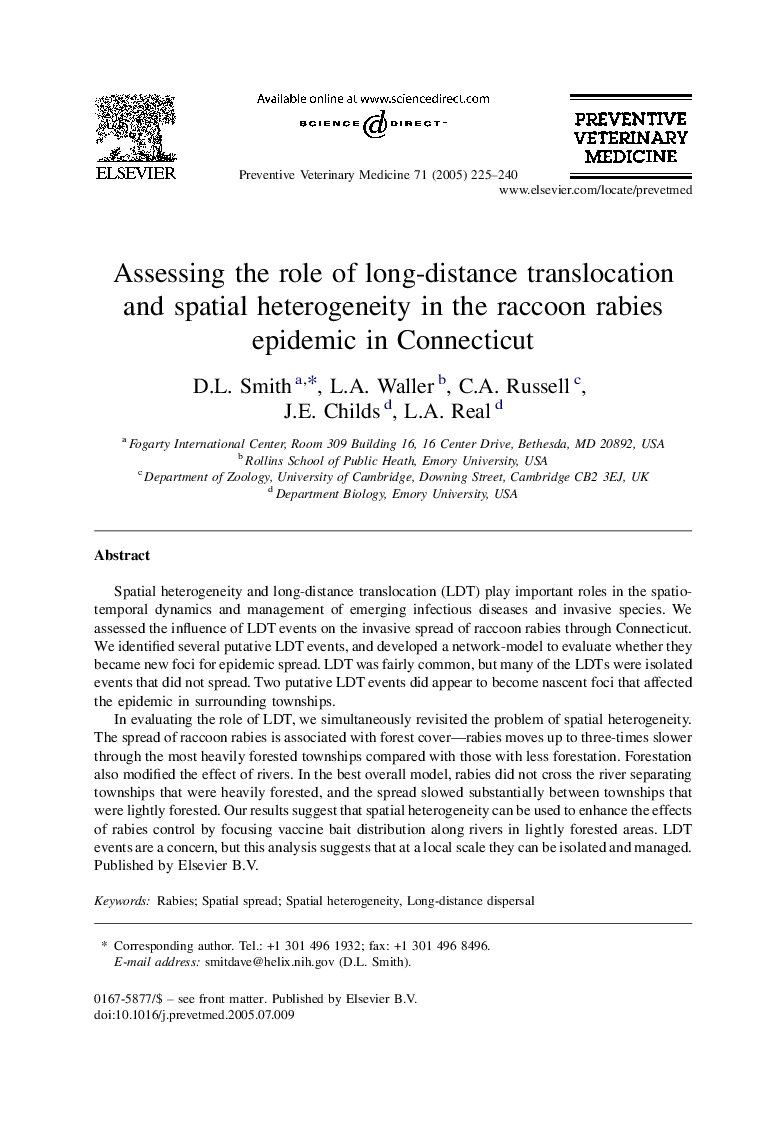| Article ID | Journal | Published Year | Pages | File Type |
|---|---|---|---|---|
| 8984908 | Preventive Veterinary Medicine | 2005 | 16 Pages |
Abstract
In evaluating the role of LDT, we simultaneously revisited the problem of spatial heterogeneity. The spread of raccoon rabies is associated with forest cover-rabies moves up to three-times slower through the most heavily forested townships compared with those with less forestation. Forestation also modified the effect of rivers. In the best overall model, rabies did not cross the river separating townships that were heavily forested, and the spread slowed substantially between townships that were lightly forested. Our results suggest that spatial heterogeneity can be used to enhance the effects of rabies control by focusing vaccine bait distribution along rivers in lightly forested areas. LDT events are a concern, but this analysis suggests that at a local scale they can be isolated and managed.
Keywords
Related Topics
Life Sciences
Agricultural and Biological Sciences
Animal Science and Zoology
Authors
D.L. Smith, L.A. Waller, C.A. Russell, J.E. Childs, L.A. Real,
